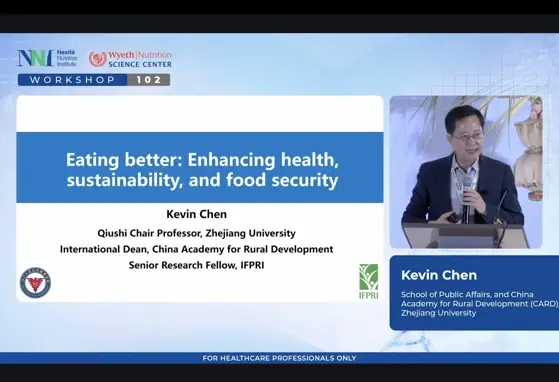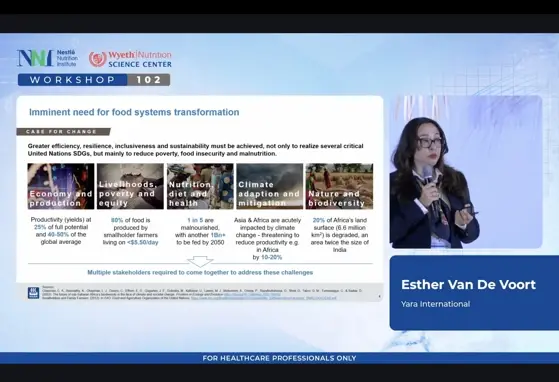Does Breastfeeding Affect the Child’s Body Composition as an Adolescent?

Silvana Orlandi of the Federal University of Pelotas and colleagues evaluated the effects of breastfeeding on adolescent body composition. The researchers evaluated 1,438 births, with data taken at intervals up to 18 years of age. In-home interviews were part of the process, and body mass index, fat-free mass index and other measures were used to assess weight status and body composition. Fat-free mass index was associated with several genetic and socioeconomic variables, with FMI being higher in males from higher-income households and both FMI and FFMI being linked to a mother’s pre-pregnancy BMI. Overall, breastfeeding was associated with fat mass indexes during later adolescence for both genders, though a link between semisolid and solid food introduction and body composition was limited to females
Obesity is on the rise among all age groups in Brazil. Although body mass index (BMI) is the common measure to determine one’s obesity status, it does not account for the difference in fat mass and fat-free mass. Several studies have shown that factors in early life such as the amount of weight gained and being breastfed play a role in determining health outcomes in adulthood. In a recent study in BMC Nutrition, researchers examined the effects of breastfeeding on adolescent body composition.
The study included data taken at 6 months old, 12 months old, 48 months old and 18 years of age of adolescents born in 1993 in Pelotas, Brazil. A total of 1,438 births were included in the final study sample. Researchers completed in-home visits to interview mothers on their breastfeeding habits, with a specific interest in how long the children breastfed for and when they began to consume other milk products or semisolid and solid foods. The researchers were anticipating that longer and exclusive breastfeeding as infants would lead to higher fat-free mass indexes.
In addition to BMI, the researchers used other measures to evaluate weight status and body composition. Fat-free mass index (FFMI) is a measure used to evaluate the amount of the body mass that comes from muscle, internal organs, bones, water, and connective tissue. FMI measures the amount of body mass that comes from fat.
Nutritional Variables and Fat Mass Indexes
The average fat-free mass index of males in the study was 19.0 kg/m2 and the average fat mass index (FMI) was 4.0 kg/m2. Among females, the average FMI and FFMI were 8.0 kg/m2 and 15.5 kg/m2 respectively. The results showed that fat-free mass indexes were associated with several socioeconomic and genetic variables.
FMI was higher in males from households with higher incomes and both FMI and FFMI were linked to the mother’s pre-pregnancy BMI. The fat-free mass index was higher in females with mothers who smoked and FMI was high among females with low birth weight but low in those with mothers with dark skin. As with males, pre-pregnancy BMI was linked to FMI and FFMI.
FFMI was found to be linked to the duration of breastfeeding in males. Furthermore, FFMI was higher in females who breastfed, versus those who did not breastfeed at all. Along with FMI, FFMI was higher in females who started consuming semisolid and solid foods at four to five months old. The length of time spent breastfeeding and when the infant started consuming other milk ingredients were not linked to FMI in females.
In conclusion, for both males and females, breastfeeding had a significant effect on body composition in later life. The results showed that breastfeeding as an infant was associated with fat mass indexes during later adolescence, for both males and females. The link between semisolid and solid food introduction and body composition, however, was exclusive to females.
One major benefit of the study was that it examined body composition in adolescents, rather than in children as most studies have done. A limitation of the study was that researchers did not examine which specific semisolid and solid foods were consumed. Still, this study is beneficial as it provides more insight into the effects of early nutritional exposures on adult health and disease.
Written by Monica Naatey-Ahumah, BSc
Reference: Orlandi, S.P., González-Chica, D.A., Buffarini, R., Gonzalez, M.C., Menezes, A.M.B., Barros, F.C., and Assunção, M.C.F. (2017). Breastfeeding and complementary feeding associated with body composition in 18– 19 years old adolescents in the 1993 Pelotas Birth Cohort. BMC Nutrition, 3(84). https://doi.org/10.1186/s40795-017-0201-z.
Links : https://www.medicalnewsbulletin.com/breastfeeding-affect-childs-body-composition-adolescent/



